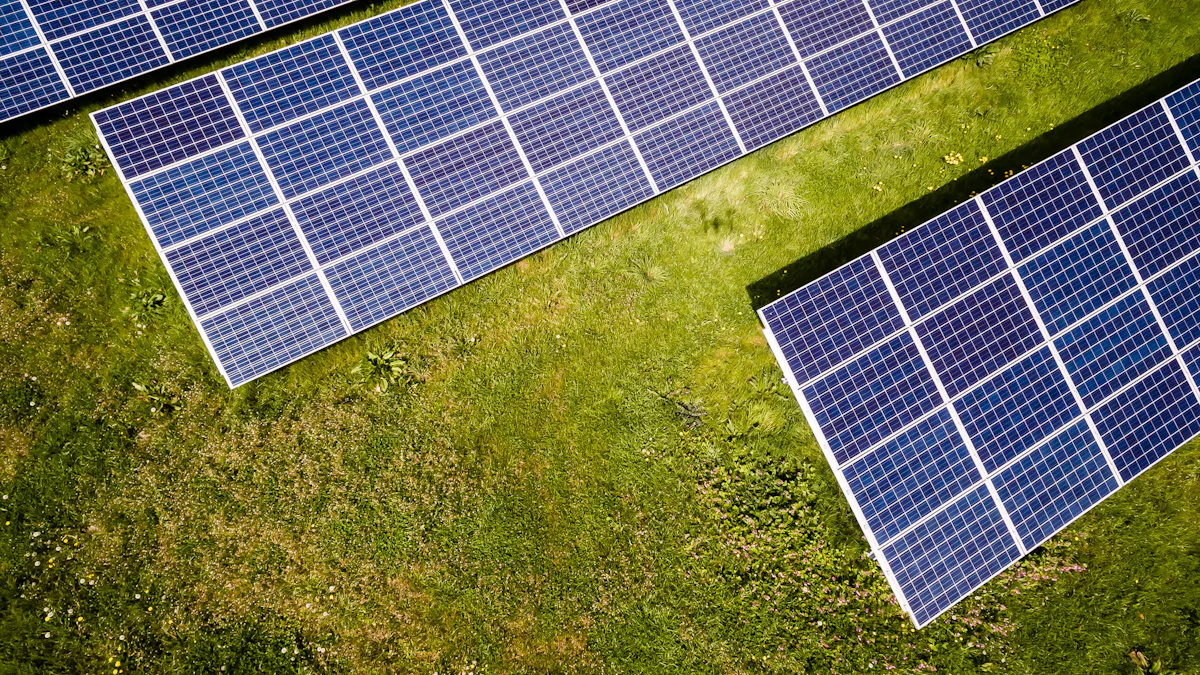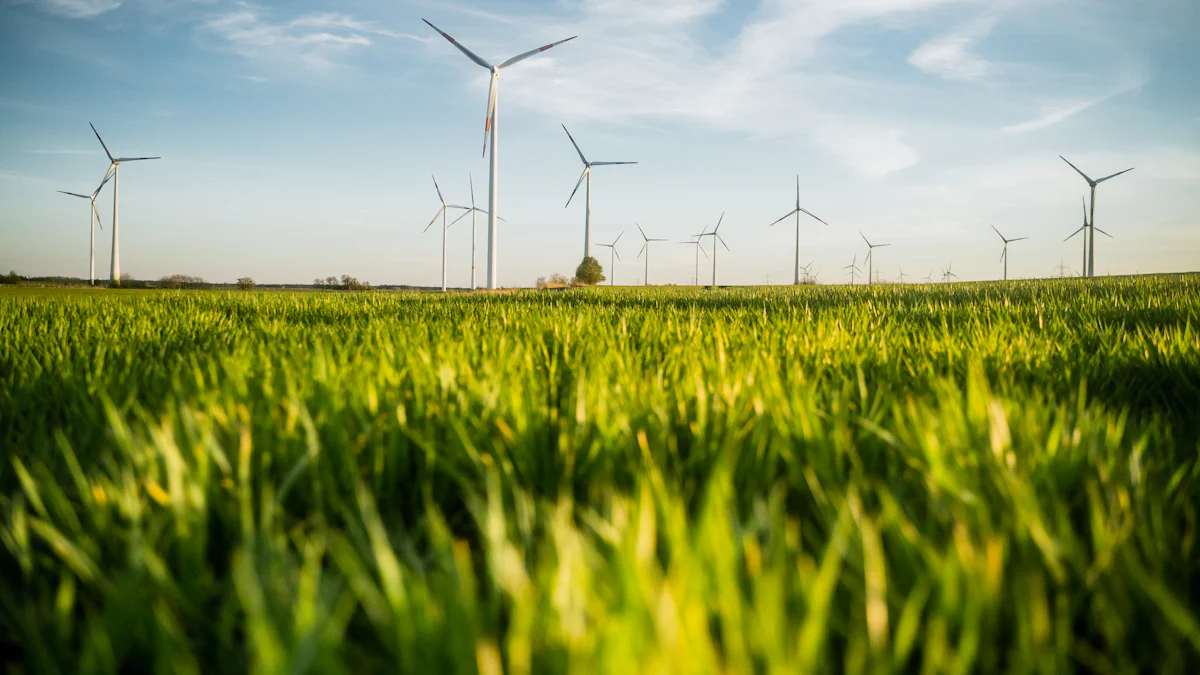
News

A low frequency inverter, also known as a VFD (Variable Frequency Drive), converts DC power into AC power using a transformer-based design. It’s built to handle high surge loads, making it perfect for powering large appliances like refrigerators or air conditioners. Its robust construction ensures stable energy output, even in demanding applications like off-grid systems, hospitals, or communication networks.
Key Takeaways
Low frequency inverters change DC power into AC power. They use a transformer and work well with big appliances like fridges and air conditioners.
These inverters can manage high power surges, up to 300% of their limit. This keeps them steady even when power needs suddenly rise.
Buying a low frequency inverter saves money over time. They last long and work efficiently, cutting repair and energy costs.
How Does a Low Frequency Inverter Work?
Transformer-Based Design and Functionality
A low frequency inverter relies on a transformer to handle its power conversion tasks. This transformer connects directly to the battery, which helps it manage sudden power surges effectively. Its power rating determines the overall capacity of the inverter, so it’s a critical component. The primary winding of the transformer uses heavy gauge wire, making it ideal for high-current applications. To operate at low frequencies like 50Hz or 60Hz, the inverter uses high-frequency switching with MOSFETs to drive the transformer. This design ensures the inverter can deliver a stable output, even under heavy loads.
DC to AC Conversion Process
The process of converting DC to AC power involves several technical steps. First, the inverter uses a circuit, such as a 555 timer, to generate a square wave. This wave then passes through an LC circuit to refine its shape, creating a smoother waveform. Another method involves using a CD4047 chip as an astable multivibrator to produce a square wave. This wave is amplified by MOSFETs and transformed into AC voltage suitable for your appliances. Some inverters also use transistors to create an oscillator circuit, which generates a 12V AC signal. A transformer then steps this up to the required voltage, like 220V, for household use.
Key Performance Characteristics
A low frequency inverter stands out for its ability to deliver a consistent output. It produces a stable waveform, often a pure sine wave, which is ideal for sensitive electronics. Its transformer-based design ensures high surge capacity, allowing it to handle sudden power demands without faltering. Additionally, the inverter’s control circuit monitors feedback signals to adjust the output voltage and frequency as needed. This makes it reliable for heavy-duty applications, where maintaining a steady output voltage waveform is crucial.
Advantages of Low Frequency Inverters
Durability and High Surge Capacity
When it comes to durability, a low frequency inverter outshines other types. Its transformer-based design makes it robust and long-lasting. You’ll find that these inverters can handle high surge loads without breaking a sweat. For example, they can manage power spikes up to 300% of their nominal power for several seconds. This makes them perfect for starting heavy-duty equipment like motors or compressors.
Here’s a quick comparison to show how they stack up against other inverters:
The ability to absorb electrical surges is tied to the amount of iron in the transformer. This feature ensures your inverter can handle demanding applications without faltering.
Stability and Reliability for Heavy-Duty Use
If you’re running heavy-duty appliances, stability is key. A low frequency inverter delivers a consistent output, often in the form of a pure sine wave. This is crucial for sensitive electronics and high-power devices. Unlike high-frequency inverters, which can only surge for milliseconds, low-frequency models can sustain surges for up to five seconds. This makes them ideal for powering air conditioners, refrigerators, and other appliances that require a steady energy supply.
You’ll also appreciate their reliability in off-grid systems or industrial setups. The transformer design ensures the inverter can handle sudden power demands while maintaining a stable output. This means fewer interruptions and smoother operation for your equipment.
Long-Term Cost Efficiency
Investing in a low frequency inverter might seem pricey upfront, but it pays off in the long run. Its durability means fewer replacements and repairs over time. Plus, its ability to handle high surge loads reduces the risk of damage to your appliances.
You’ll also save on energy costs. These inverters are designed to operate efficiently, minimizing energy loss during the DC to AC conversion process. If you’re looking for a reliable power solution that won’t break the bank in the long term, this type of inverter is a smart choice.
Low Frequency vs. High Frequency Inverters

Design and Functional Differences
When comparing low-frequency and high-frequency inverters, the design differences are pretty noticeable. Low-frequency inverters use heavy iron transformers, making them larger and heavier. On the other hand, high-frequency inverters rely on lightweight electronic components like MOSFETs, which makes them compact and portable.
Functionally, low-frequency inverters excel at handling high surge loads. They can manage power spikes up to 200% of their nominal capacity for several seconds. High-frequency inverters, however, can only handle about 150% for a much shorter time. If you need stable power for heavy equipment, low-frequency models are the way to go. High-frequency inverters, though, are more efficient and better suited for variable power conditions.
Pros and Cons of Each Type
Here’s a quick breakdown of the advantages and disadvantages:
Low-Frequency Inverters:
Pros:
Can handle higher power spikes (up to 300% of rated power).
More reliable due to robust transformer design.
Ideal for heavy-duty applications requiring stable power.
Cons:
Heavier and bulkier.
Lower efficiency (conversion efficiency around 60%-70%).
High-Frequency Inverters:
Pros:
Lightweight and compact.
Higher efficiency during power conversion.
Easier to install and maintain.
Cons:
Less reliable under high power conditions.
Limited ability to handle power surges.
Choosing the Right Inverter for Your Needs
Picking the right inverter depends on your specific needs. If you’re powering heavy-duty appliances or off-grid systems, go for a low-frequency inverter. Its durability and ability to handle high surge loads make it perfect for demanding applications.
For lighter loads or portable setups, a high-frequency inverter might be a better fit. It’s easier to install and maintain, and its compact design saves space. However, if reliability and long-term performance are your priorities, low-frequency inverters are worth the investment.
Tip: Consider factors like peak power capacity, reliability, and installation complexity before making your choice.
Low-frequency inverters offer unmatched durability and reliability for high-power applications. They handle peak loads up to 300% of their rated power, making them perfect for heavy-duty appliances like air conditioners or refrigerators. Their robust transformers ensure stable performance, even in demanding off-grid setups.
Here’s why they’re ideal for off-grid systems:
High surge capacity for powering heavy equipment.
Built-in features like battery chargers and UPS functions.
Reliable design for long-term use in remote locations.
Thinking about getting one? Keep these tips in mind:
Choose a low-frequency inverter for high-power tools or appliances.
They’re best for off-grid homes with no size or weight restrictions.
Perfect for powering kitchen essentials like microwaves or refrigerators.
FAQ
What appliances can a low-frequency inverter power?
A low-frequency inverter can handle heavy-duty appliances like refrigerators, air conditioners, and microwaves. It’s also great for sensitive electronics like computers or medical equipment.
How do I maintain a low-frequency inverter?
Keep it in a cool, dry place. Regularly check the connections and clean dust from vents. Follow the manufacturer’s manual for specific maintenance tips.
Is a low-frequency inverter suitable for off-grid systems?
Absolutely! Its durability, high surge capacity, and stable output make it perfect for off-grid homes or remote locations with heavy power demands.
Please give us a message